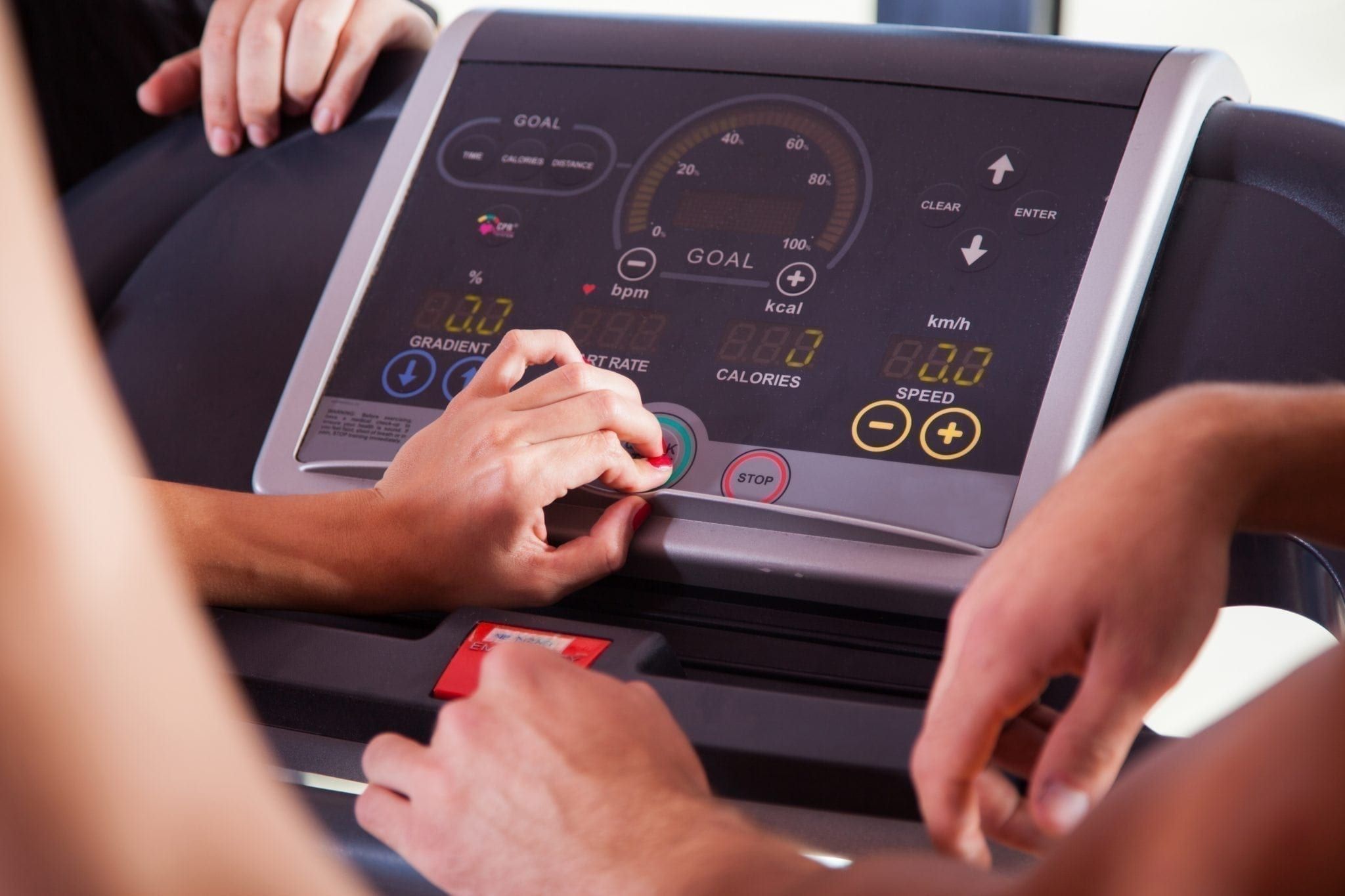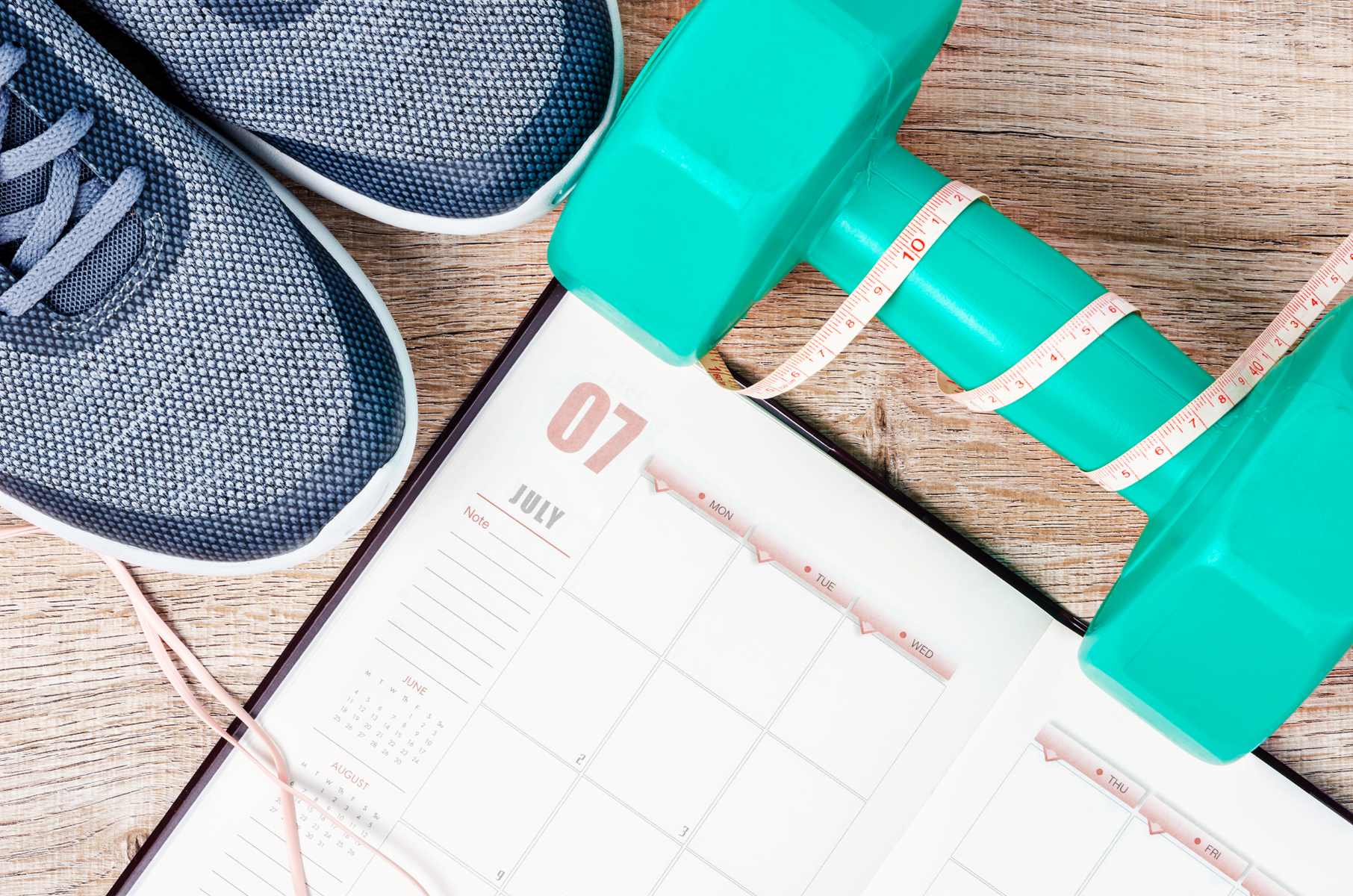

Featured
How To Get The Energy To Workout
Modified: January 2, 2024
Discover the best ways to boost your energy levels and find motivation to workout with our featured tips and tricks. Start feeling energized and achieve your fitness goals today!
Introduction
Welcome to the world of fitness and workouts, where finding the energy to hit the gym or engage in physical activities is crucial. Whether you’re a seasoned gym-goer or a beginner, having the energy to work out is essential for achieving your fitness goals and maintaining a healthy lifestyle.
Many people struggle with finding the motivation and energy to exercise regularly. With our demanding schedules and busy lives, it’s common to feel fatigued and drained, making it difficult to muster the energy for a challenging workout. However, with some helpful strategies and lifestyle adjustments, you can boost your energy levels and find the motivation to get moving.
In this article, we will explore various ways to get the energy you need to power through your workouts. From improving your sleep routine to incorporating the right nutrients into your diet and developing a consistent workout schedule, we will provide you with practical tips to amp up your energy levels and enhance your fitness journey.
So, let’s dive in and discover how you can unlock the energy you need to crush your workouts and achieve your fitness goals!
Importance of Having Energy for Workouts
Having adequate energy levels for your workouts is crucial for various reasons. Whether you’re engaging in cardiovascular exercises, strength training, or any other form of physical activity, having sufficient energy can significantly impact your performance and overall fitness progress.
Firstly, energy is the fuel that powers your workouts. Without enough energy, you may feel tired, sluggish, and unable to complete your exercises with intensity and focus. Whether you’re aiming to increase your endurance, build muscle, or improve your overall fitness level, having the energy to push yourself during workouts is vital.
Additionally, having ample energy can enhance your exercise efficiency and effectiveness. When you’re properly fueled, you can perform your exercises with proper form and technique, reducing the risk of injury and maximizing the benefits of your workouts. Fatigue and low energy levels can lead to sloppy form, decreased performance, and potential injury.
Furthermore, energy levels can impact your mental focus and motivation during workouts. When you’re feeling energized, you’re more likely to be mentally engaged and motivated to push through challenging exercises. On the other hand, low energy levels can lead to a lack of focus, reduced performance, and decreased overall enjoyment of your workout.
It’s important to note that energy levels not only impact your workouts but also your post-workout recovery. Adequate energy allows for proper muscle repair and growth, ensuring optimal recovery between exercise sessions. Without sufficient energy, your body may struggle to repair and rebuild, leading to slower progress and increased risk of overtraining.
In summary, having enough energy for your workouts is crucial for optimal performance, exercise efficiency, mental focus, and post-workout recovery. By ensuring that you have the energy necessary to power through your workouts, you can maximize your fitness gains and achieve your fitness goals more effectively.
Getting Enough Sleep
Getting enough sleep plays a pivotal role in ensuring you have the energy required for your workouts. Sleep is essential for our overall health and well-being, including our physical and mental performance. Lack of sleep can lead to fatigue, decreased motivation, and reduced exercise performance. Here are some tips to help you optimize your sleep and recharge your energy levels:
- Establish a Consistent Sleep Schedule: Set a regular sleep schedule by going to bed and waking up at the same time every day, even on weekends. This helps regulate your body’s internal clock and improves the quality of your sleep.
- Create a Calming Bedtime Routine: Develop a relaxing routine before bed to signal to your body that it is time to unwind. This could include activities such as reading a book, taking a warm bath, or practicing meditation or deep breathing exercises.
- Create a Sleep-Friendly Environment: Make your bedroom conducive to sleep by keeping it dark, quiet, and at a comfortable temperature. Consider using blackout curtains, earplugs, or a white noise machine to create a soothing atmosphere.
- Avoid Stimulants Before Bed: Limit your intake of caffeine and avoid consuming it close to bedtime, as it can disrupt your sleep. Similarly, avoid heavy meals, nicotine, and electronic devices before bed, as they can interfere with your ability to fall asleep and stay asleep.
- Manage Stress: Incorporate stress reduction techniques into your daily routine, such as journaling, practicing yoga or mindfulness, or talking to a trusted friend or therapist. High stress levels can negatively impact the quality of your sleep, so finding healthy coping mechanisms is essential.
- Invest in a Comfortable Mattress and Pillows: Ensure your sleeping surface is comfortable and supportive. A quality mattress and pillows that suit your preferences can improve your sleep quality and overall comfort.
- Limit Daytime Napping: If you struggle with falling asleep at night, it’s best to limit daytime napping. If you do take a nap, keep it to a short duration (around 20-30 minutes) and earlier in the day to avoid interfering with your nighttime sleep.
Prioritizing adequate sleep is crucial for restoring your energy levels and optimizing your workout performance. By following these tips and making sleep a priority, you can ensure you are well-rested and ready to tackle your workouts with vigor and enthusiasm.
Eating the Right Foods
The food you consume plays a significant role in providing the energy needed for your workouts. Proper nutrition not only fuels your body but also impacts your overall health and well-being. Here are some key tips to ensure you’re eating the right foods to optimize your energy levels:
- Focus on Balanced Meals: Include a combination of macronutrients in your meals, including carbohydrates, protein, and healthy fats. Carbohydrates provide the primary source of energy for your muscles, while protein aids in muscle repair and growth. Healthy fats help support overall health and can provide sustained energy.
- Incorporate Complex Carbohydrates: Opt for complex carbohydrates such as whole grains, fruits, and vegetables. These are rich in fiber and release energy slowly, providing a steady supply of fuel during your workouts.
- Include Lean Protein Sources: Incorporate lean protein sources such as poultry, fish, eggs, tofu, and legumes. Protein is essential for muscle repair and growth, allowing you to maintain and build lean muscle mass.
- Don’t Forget Healthy Fats: Include sources of healthy fats such as avocados, nuts, seeds, and olive oil. These provide essential fatty acids, which support overall health and can provide sustained energy throughout your workouts.
- Stay Hydrated: Hydration is vital for energy and optimal performance. Make sure to drink enough water throughout the day to stay hydrated. If you’re engaging in intense workouts, consider replenishing electrolytes with sports drinks or coconut water.
- Pre-Workout Snacks: If you find yourself lacking energy before a workout, have a small pre-workout snack around 30 minutes to an hour beforehand. Opt for a combination of carbohydrates and protein, such as a banana with nut butter or yogurt with berries.
- Post-Workout Nutrition: After your workout, prioritize post-workout nutrition to aid in muscle recovery. Include a combination of protein and carbohydrates within 30 minutes to an hour after your workout. This could be a protein shake, a lean meat and rice meal, or a Greek yogurt with fruit.
- Listen to Your Body: Everyone’s nutritional needs may vary, so it’s important to listen to your body and adjust your diet accordingly. Pay attention to how different foods make you feel and choose those that provide sustained energy and support your overall well-being.
By fueling your body with the right foods, you can optimize your energy levels, improve workout performance, and support your overall health and fitness goals.
Hydrating Properly
Proper hydration is essential for maintaining optimal energy levels during your workouts. Dehydration can lead to fatigue, muscle cramps, and reduced exercise performance. To ensure you’re hydrating properly, follow these tips:
- Drink Water Throughout the Day: Make it a habit to drink water regularly throughout the day. Aim for at least 8 cups (64 ounces) of water per day, or more if you are engaging in intense workouts or in hot weather.
- Hydrate Before Your Workout: Drink water before your workout to ensure you start off adequately hydrated. Aim for around 16-20 ounces of water approximately 2 hours before your workout. If exercising for an extended period or in high temperatures, consider sipping on water during your workout as well.
- Monitor Your Urine Color: Pay attention to the color of your urine as an indicator of hydration. Clear or pale yellow urine generally indicates proper hydration, while dark-colored urine may indicate dehydration.
- Include Hydrating Foods: Many fruits and vegetables have high water content and can contribute to your overall hydration. Include foods like watermelon, cucumber, oranges, and lettuce to add hydration to your diet.
- Consider Electrolyte Replenishment: During intense or prolonged workouts, consider replenishing electrolytes lost through sweat. Electrolytes like sodium, potassium, and magnesium help maintain fluid balance in the body. You can consume electrolyte-enriched beverages or include natural sources like coconut water and bananas.
- Use an App or Water Bottle with Reminders: If you struggle to remember to drink water throughout the day, use a reminder app or invest in a water bottle with time markers to track your water intake and ensure you’re getting enough fluids.
- Hydrate After Your Workout: Replenish your fluids and electrolytes post-workout to aid in recovery. Drink water and consider consuming a sports drink or electrolyte-rich beverage to restore hydration levels.
- Listen to Your Body: It’s important to listen to your body and drink when you’re thirsty. Thirst is your body’s way of signaling that it needs hydration, so don’t ignore it.
By hydrating properly, you can maintain optimal energy levels, improve exercise performance, and support your overall health and well-being.
Pre-Workout Supplements
Pre-workout supplements are a popular option for individuals looking to boost their energy levels and enhance their workout performance. These supplements typically contain a combination of ingredients designed to increase energy, improve focus, and promote endurance. While not necessary for everyone, pre-workout supplements can be beneficial in specific situations. Here are some key considerations:
- Ingredients to Look For: When choosing a pre-workout supplement, look for ingredients such as caffeine, beta-alanine, creatine, and citrulline malate. These ingredients have been shown to increase energy, improve muscle power, and enhance endurance.
- Timing: Take your pre-workout supplement approximately 30 minutes to an hour before your workout to allow the ingredients to take effect. This timing may vary depending on the specific supplement, so be sure to read the instructions provided.
- Dosage: Follow the recommended dosage guidelines provided by the manufacturer. It’s important not to exceed the recommended dosage, as high levels of certain ingredients can have negative side effects.
- Individual Sensitivity: Keep in mind that everyone’s tolerance and sensitivity to pre-workout supplements may vary. Start with a lower dosage and gradually increase if needed to assess your tolerance and ensure you don’t experience any adverse effects.
- Consult with a Healthcare Professional: If you have any underlying health conditions or are taking medications, it’s essential to consult with a healthcare professional before incorporating pre-workout supplements into your routine. They can provide personalized guidance based on your specific needs and medical history.
- Consider Food Alternatives: If you prefer to avoid pre-workout supplements, you can opt for natural alternatives. Consuming a small snack or meal that combines carbohydrates and protein before your workout can provide a similar energy boost.
- Focus on Overall Nutrition: While pre-workout supplements can provide a temporary energy boost, it’s crucial to prioritize overall nutrition for sustained energy and performance. Ensure you’re consuming a balanced diet with adequate nutrients to fuel your workouts.
- Personal Preference: Ultimately, the decision to use pre-workout supplements is a personal one. Some individuals may find them beneficial in achieving their fitness goals, while others may prefer to rely on natural energy sources and food. Listen to your body and make choices that align with your preferences and goals.
Remember, using pre-workout supplements is a personal choice and may not be necessary for everyone. It’s important to assess your individual needs, consult with professionals if needed, and consider alternative options to ensure you’re making the best decision for your fitness journey.
Proper Warm-Up Routine
A proper warm-up routine is essential before engaging in any workout or physical activity. It helps prepare your body for the upcoming exercise session, increases blood flow to the muscles, and enhances flexibility and range of motion. Here are some key elements to include in your warm-up routine:
- Dynamic Stretching: Start your warm-up with dynamic stretching exercises. These involve movements that gently stretch and activate the muscles you’ll be using during your workout. Examples include arm circles, leg swings, and walking lunges.
- Cardiovascular Exercise: Incorporate some form of light cardiovascular exercise to increase your heart rate and warm up your muscles. This could be a brisk walk, light jog, cycling, or jumping jacks. Aim for 5-10 minutes of low-intensity cardio.
- Joint Mobilization: Move your joints through their full range of motion to warm them up and improve flexibility. Include exercises like shoulder circles, wrist circles, deep squats, and ankle rotations.
- Progressive Movements: Gradually increase the intensity and range of motion in your warm-up exercises. For example, you can start with bodyweight squats and gradually add resistance or increase the depth of the squat as you progress.
- Specific Movement Patterns: Incorporate movements that mimic the activities you’ll be doing during your workout. This helps activate the specific muscles and prepares your body for the specific demands of your exercise routine. For example, if you’ll be doing upper body exercises, include push-ups or arm circles.
- Mental Preparation: Use your warm-up time to mentally prepare for your workout. Visualize yourself successfully completing the exercises and focus on the goals you want to achieve. This mental preparation can help improve focus and productivity during your workout.
- Hydration: During your warm-up, ensure you’re well-hydrated by sipping on water as needed. Staying adequately hydrated throughout your workout is essential for optimal performance.
- Listen to Your Body: Pay attention to how your body feels during the warm-up. If you experience any pain or discomfort, adjust or modify the exercises accordingly. It’s important to prioritize safety and avoid pushing your body beyond its limits.
A proper warm-up routine sets the foundation for a safe and effective workout. By incorporating dynamic stretching, cardiovascular exercise, joint mobilization, and specific movement patterns, you can prepare your body for the demands of your workout and reduce the risk of injury.
Finding Motivation and Setting Goals
Finding the motivation to work out consistently can sometimes be a challenge. However, setting clear goals and finding strategies to stay motivated can help you overcome any hurdles and maintain a consistent workout routine. Here are some tips for finding motivation and setting goals:
- Identify Your Why: Reflect on why you want to incorporate regular exercise into your life. Whether it’s to improve your health, boost your confidence, or achieve a specific fitness goal, understanding your underlying motivations can provide the drive you need to stay committed.
- Set Realistic Goals: Set specific, realistic, and achievable goals that align with your aspirations. Break down your larger goals into smaller, manageable milestones to track your progress and maintain motivation along the way.
- Make it Personal: Customize your goals and workout routine based on your preferences and interests. Find activities that you genuinely enjoy, whether it’s dancing, swimming, hiking, or playing a sport. When you’re engaged in activities you love, staying motivated becomes easier.
- Create Accountability: Find ways to hold yourself accountable for sticking to your workout routine. This could include finding a workout buddy, joining a fitness class, or using a fitness app that tracks your progress. Having someone or something to answer to can help keep you on track.
- Reward Yourself: Set up rewards for reaching your fitness goals. Treat yourself to something you enjoy when you hit a milestone, such as buying new workout gear, going for a massage, or indulging in a healthy meal at your favorite restaurant. Rewards provide positive reinforcement and keep you motivated to push through challenges.
- Track Your Progress: Keep a record of your workouts, whether it’s through a fitness app, a journal, or a calendar. Tracking your progress allows you to see how far you’ve come and provides a sense of accomplishment, motivating you to keep going.
- Draw Inspiration from Others: Surround yourself with like-minded individuals who inspire and motivate you. This could be through joining fitness communities, following fitness influencers on social media, or participating in group fitness classes. Seeing others achieve their goals can ignite your own motivation.
- Switch Up Your Routine: Avoid falling into a workout rut by constantly challenging yourself and incorporating variety into your routine. Trying new exercises, exploring different workout styles, or participating in fitness challenges keeps things interesting and helps prevent burnout.
- Practice Positive Self-Talk: Cultivate a positive mindset and practice self-compassion. Encourage yourself with positive affirmations and focus on the progress you’ve made rather than dwelling on setbacks. A positive mindset can significantly impact your motivation and overall well-being.
By finding your motivation, setting realistic goals, and implementing strategies to stay motivated, you can overcome obstacles and maintain a consistent workout routine. Remember, motivation may fluctuate, but with the right mindset and tools, you can stay committed to achieving your fitness goals.
Creating a Consistent Workout Schedule
Consistency is key when it comes to seeing progress and achieving your fitness goals. Creating a consistent workout schedule helps you build healthy habits, stay motivated, and make exercise a regular part of your routine. Here are some tips to help you establish and maintain a consistent workout schedule:
- Choose a Specific Time: Select a specific time that works best for you to exercise. Whether it’s mornings, lunch breaks, or evenings, having a designated time slot helps create a routine and ensures you make exercise a priority.
- Block Your Schedule: Treat your workout time as an important appointment and block it off in your calendar. This helps you prioritize your exercise and prevents scheduling conflicts that could derail your routine.
- Start Small: If you’re new to regular exercise, start with shorter workout sessions and gradually increase the duration and intensity as you build strength and endurance. Starting small increases the likelihood of sticking to your schedule and prevents burnout.
- Mix Up Your Workouts: Incorporate a variety of workouts to keep things interesting and prevent boredom. Try different forms of exercise such as cardio, strength training, yoga, or group fitness classes. This variety can help maintain your interest and motivation over time.
- Be Realistic: Set realistic expectations for your workouts. Don’t try to squeeze in long, intense sessions if you have limited time or energy. Instead, focus on shorter, more efficient workouts that fit your schedule and energy levels.
- Have a Backup Plan: Life can sometimes get in the way of our workout plans. Have a backup plan for those situations where your original workout time is unavailable. This could be a quick at-home workout, a shorter session at the gym, or even a walk or jog around your neighborhood.
- Find Accountability: Find a workout buddy or join a fitness group to hold yourself accountable. The presence of someone else can provide support, motivation, and make your workouts more enjoyable.
- Track Your Progress: Keep track of your workouts and monitor your progress. Whether it’s maintaining a workout log or using a fitness app, tracking your progress helps you stay motivated and see how far you’ve come.
- Listen to Your Body: Be mindful of your body’s needs and adjust your workout schedule accordingly. Rest and recovery are crucial for preventing burnout and reducing the risk of injury. If you feel fatigued or overwhelmed, give yourself permission to take a break and recharge.
- Make it Enjoyable: Choose activities that you genuinely enjoy and look forward to. When you find joy in your workouts, you’ll be more likely to stick to your schedule and maintain consistency in the long run.
By creating a consistent workout schedule and following these tips, you can prioritize exercise, build healthy habits, and make positive strides toward achieving your fitness goals.
Managing Stress and Mental Fatigue
Stress and mental fatigue can have a significant impact on your motivation and energy levels, making it challenging to maintain a consistent workout routine. By implementing effective stress management strategies and prioritizing self-care, you can better manage these factors and stay on track with your fitness goals. Here are some tips for managing stress and mental fatigue:
- Practice Stress-Relieving Techniques: Incorporate stress-relieving techniques into your daily routine, such as deep breathing exercises, meditation, or yoga. These activities can help calm your mind, reduce stress levels, and improve your overall well-being.
- Prioritize Sleep: Ensure you’re getting enough quality sleep to help manage stress and avoid mental fatigue. Establish a relaxing bedtime routine, create a comfortable sleep environment, and aim for 7-9 hours of sleep each night.
- Engage in Mindfulness: Practice mindfulness by staying present in the moment and focusing on the sensations and experiences during your workouts. This can help reduce mental fatigue and enhance your overall exercise experience.
- Find outlets for stress relief: Engage in activities that you find enjoyable and help you unwind, such as listening to music, spending time in nature, journaling, or pursuing hobbies outside of exercise. These activities can help alleviate stress and recharge your mental energy.
- Establish Work-Life Balance: Strive for a healthy work-life balance by setting boundaries, managing your time effectively, and prioritizing self-care. When you feel overwhelmed with responsibilities, it can be challenging to find the energy for exercise. Creating balance allows you to allocate time and energy to your workouts.
- Manage Expectations: Be realistic with your expectations and avoid placing unnecessary pressure on yourself. Remember that exercise should be a source of enjoyment and stress relief, rather than another item on your to-do list or a cause of added mental fatigue.
- Seek Support: Reach out to friends, family, or a support network when you feel overwhelmed. Having someone to talk to can provide perspective, advice, and emotional support. Additionally, consider seeking professional help if stress and mental fatigue persist and significantly impact your daily life.
- Practice Self-Compassion: Be kind to yourself and acknowledge that it’s normal to experience stress and mental fatigue. Treat yourself with compassion and give yourself permission to rest and recover when needed. Remember that taking care of your mental well-being is just as important as taking care of your physical health.
- Adjust Your Workout Routine if Necessary: If you’re feeling overly stressed or mentally fatigued, consider adjusting your workout routine. This could mean reducing the intensity or duration of your workouts, trying different types of exercise, or incorporating more restorative activities like gentle yoga or walking.
By effectively managing stress and mental fatigue, you can create a positive mindset and maintain the energy and motivation needed to stick to your workout routine and achieve your fitness goals.
Conclusion
Incorporating exercise into our lives is essential for our overall health and well-being. Having the energy and motivation to engage in regular workouts can make a significant difference in achieving our fitness goals. By implementing the strategies and tips outlined in this article, you can boost your energy levels, stay motivated, and maintain a consistent workout routine.
Getting enough sleep, eating the right foods, and hydrating properly are foundational elements in fueling your body for optimal performance. Additionally, establishing a proper warm-up routine prepares your body for exercise and helps prevent injury. Setting goals, finding motivation, and creating a consistent workout schedule provide structure and accountability to keep you on track.
Managing stress and mental fatigue is crucial for ensuring long-term adherence to your fitness routine. By incorporating stress-relieving techniques, taking care of your mental well-being, and seeking support when needed, you can better manage stress and maintain a positive mindset while pursuing your fitness journey.
Remember, fitness is not a one-size-fits-all approach. Listen to your body, make adjustments as needed, and focus on activities that bring you joy and fulfillment. Exercise should be a source of enjoyment, self-improvement, and stress relief.
So, take these insights and apply them to your own life. Build a foundation of energy, motivation, and consistency to fuel your workouts and achieve your fitness goals. Embrace the journey, celebrate your progress, and enjoy the many physical and mental benefits that regular exercise brings.









